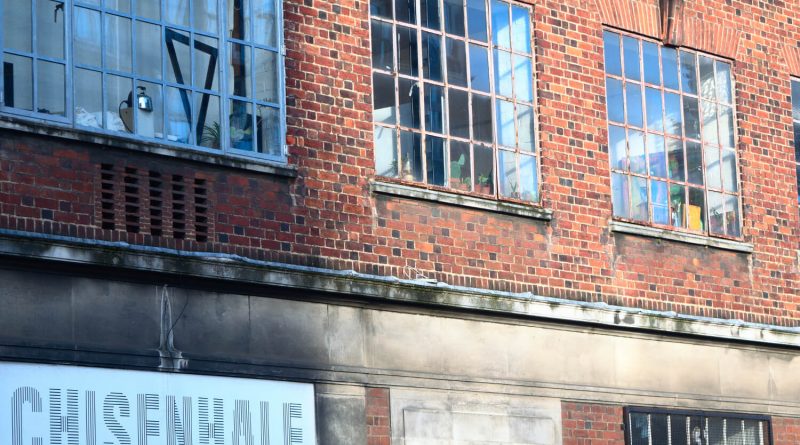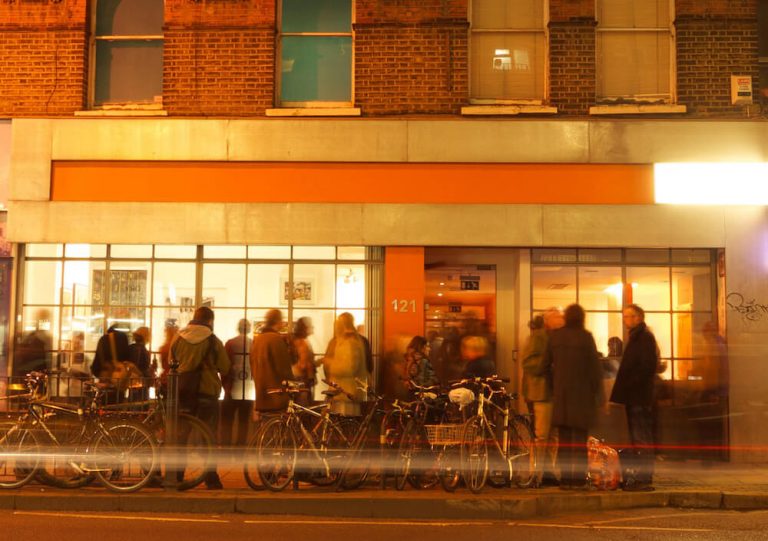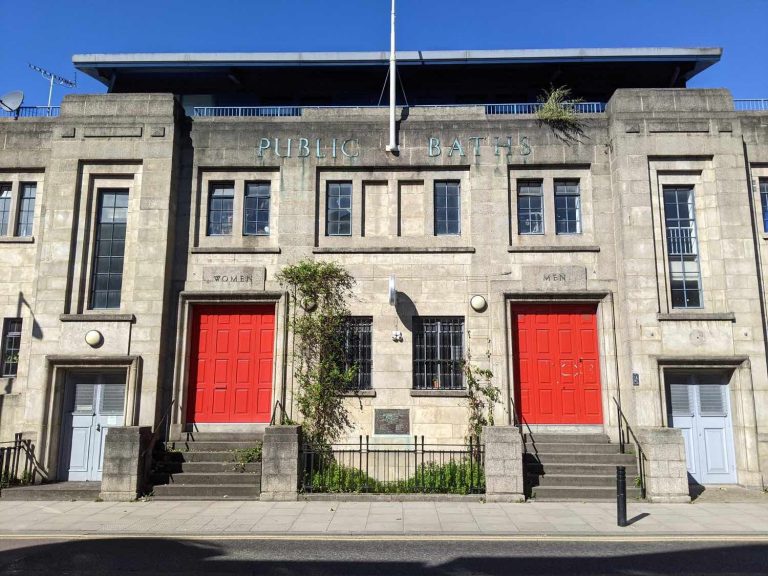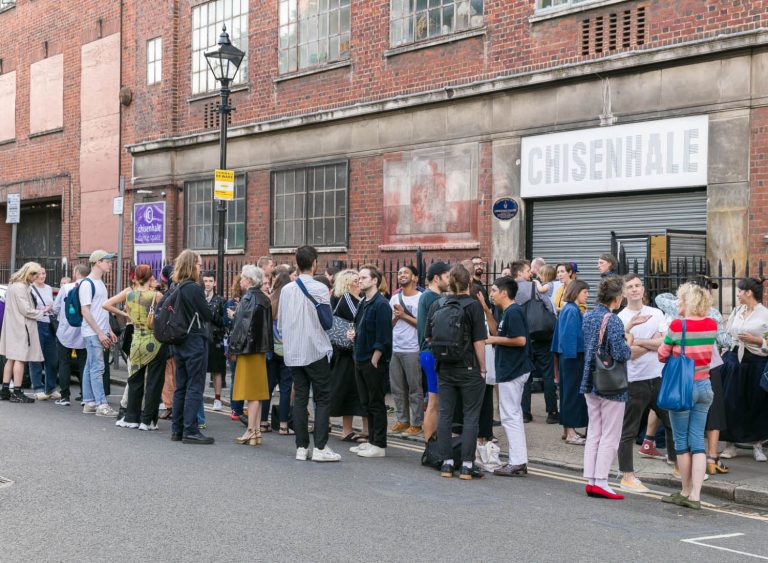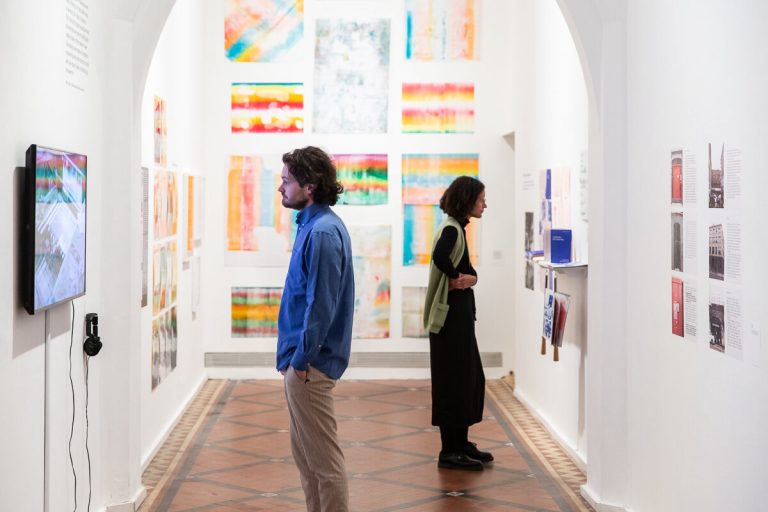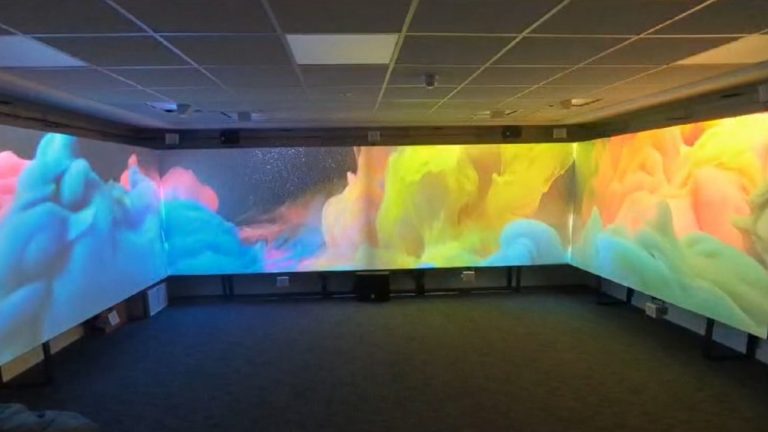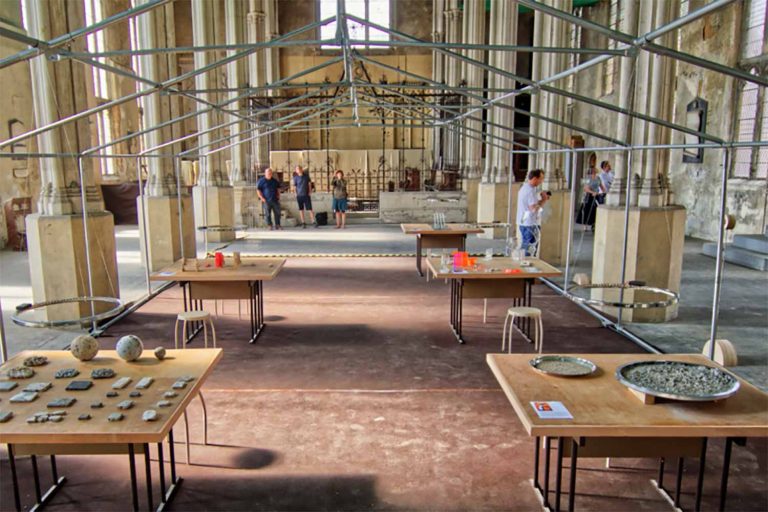Discovering Chisenhale Art Place – three creative havens under one roof
Just minutes north of Roman Road, the Chisenhale Art Place has been a home to artists of all stripes since the 1980s. Looking like an immense industrial fortress beside the Hertford Union Canal, the building is steeped in history and full of creatives. Its upcoming open weekend is a chance for you to peek inside, so we’ve decided to give you the skinny on what to expect.
The first thing to understand is that Chisenhale Art Place is not one thing – it is three things. Chisenhale is the umbrella organisation, under which three initiatives run independently of each other. The Chisenhale dragon has three heads, so to speak:
- Studios
- Gallery
- Dance Space
Although all are part of the Chisenhale whole, each branch runs independently, specialising in different areas and running their own unique programmes. That said, they all share a common home, history, and ethos.
Chisenhale Works: From rubble to castle
The original Chisenhale Works building was constructed in 1942 and 1943 by Morris Cohen, rising from the ashes of houses bombed during the Blitz. It manufactured spitfire propellers during World War II and spent much of its postwar life as a veneer factory. This contribution earned the site a spot on the Bow Heritage Trail in 1990, and ‘CHN Veneers’ still adorns the side of the building.
It is to this origin that the building owes its peculiar shape. Cohen had wanted the factory to have two wings either side of a central entrance, and the original building was erected with the expectation that there would be a second, but the home owners whose properties he wanted to build over, refused to budge. The factory would have one wing. As a result, the building’s rather important looking main entrance is stuck at the end rather than in the middle.
The factory closed in 1972 and was bought by Tower Hamlets Council. In 1980 the site was scouted by a group of artists and dancers evicted from Butler’s Wharf, on the south bank of the Thames near Tower Bridge, by property developers. The group secured a lease and the Chisenhale Art Place jigsaw has been assembling itself ever since.
Each piece has a different door.
Chisenhale Studios
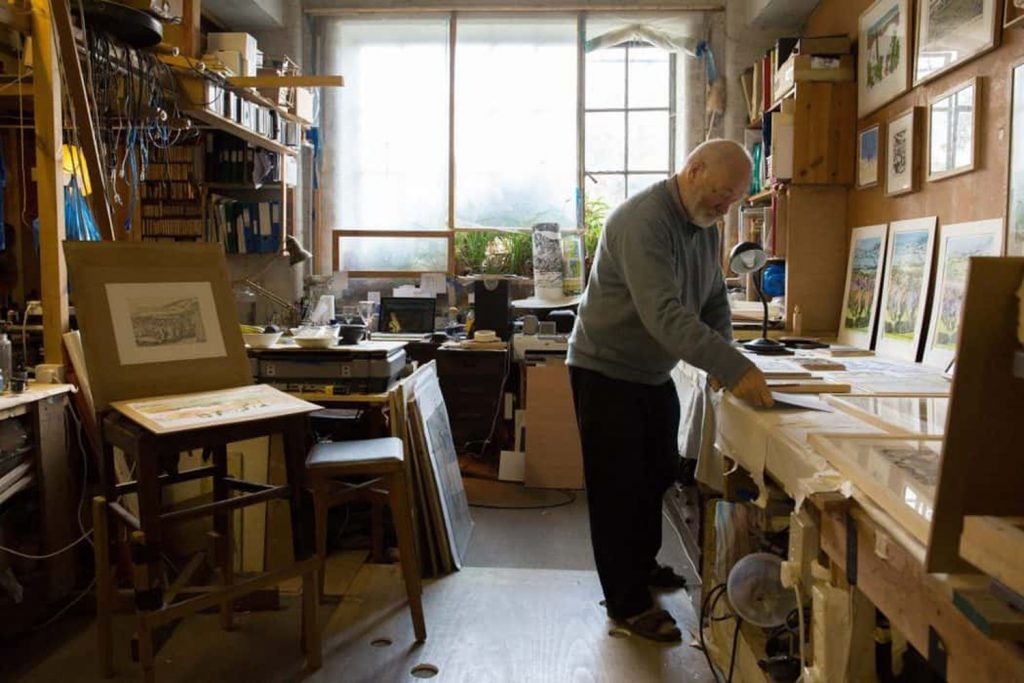
Chisenhale Studios is the black door framed by stone. It was the first of the three initiatives to take form. The artists who settled the building in the early 1980s were met with a vast, filthy space, so they cleaned it up, filled it with studios, and began making fresh mess in their own image.
The first generation of Chisenhale artists literally built the studios with their own hands. There are three floors of studios, around 12 on each floor, their walls made of cinder blocks and painted white. No two studios are the same, reflecting the work of their occupants. On open days you can see worlds in minutes.
The studios are generally more insular than the Gallery and the Dance Space, but then that was always the idea. Chisenhale Studios provides affordable studio space to artists in various stages of their careers to work in peace and security. With studio space harder and harder to come by this is a real blessing for the artists.
That said, open weekends certainly aren’t the only chance to peek behind the Chisenhale Studios curtain. It runs regular talks and has recently introduced after school art classes for children aged 7-11.
For almost 40 years Chisenhale Studios has been a haven for East London artists, and it hopes to be for another 40 yet.
Visit the chisenhale.co.uk/studios to learn more
Chisenhale Gallery
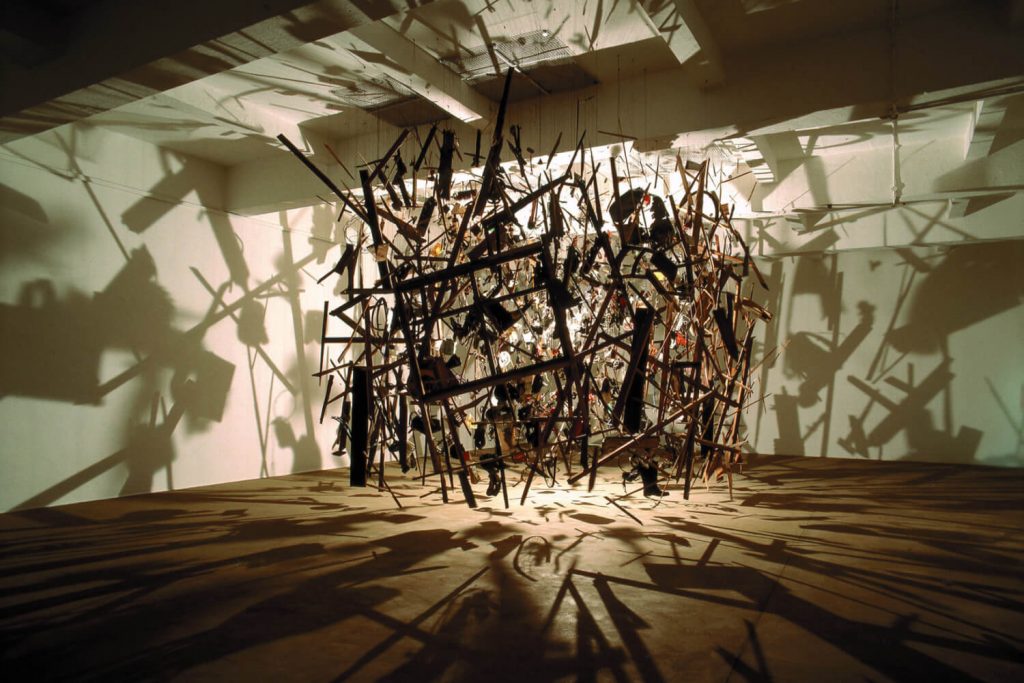
Chisenhale Gallery is the most public-facing part of Chisenhale Arts setup. It is the corrugated door. Much like Bow Arts and the Nunnery Gallery down by Bow Road, as the artists settled into their new home they realised they needed somewhere to showcase their work.
And so Chisenhale Gallery was born. It has run for 36 years, hosting numerous award-winning artists from next door and around the world. It is free to attend and always seems to deliver a memorable experience.
The gallery puts on four exhibitions per year, accompanied by programmes of events. The space in question is part of the old Chisenhale factory. The front door is what used to be a loading bay, and the gallery space proper is vast, high-ceilinged, and often windowless.
Not many rooms are able to change how many windows it has, but Chisenhale Gallery can. The space constantly evolves in response to the exhibitions it is being used for. Walls are erected and torn down, windows sealed and uncovered according to the needs of the artist.
The gallery works with artists for up to a year before their exhibition opens, and each is accompanied by a programme of events that cater to all ages. From academic talks to children’s workshops, Chisenhale Gallery gives locals every opportunity to dive into the themes of the work being showcased. It is also part of the #FirstThursdays initiative, in which people are bussed between London galleries on the first Thursday of every month.
The likes of Rachel Whiteread, Cornelia Parker, and Wolfgang Tillmans have all passed through Chisenhale’s corrugated doors, and so can you
Visit chisenhale.org.uk for more information
Chisenhale Dance Space
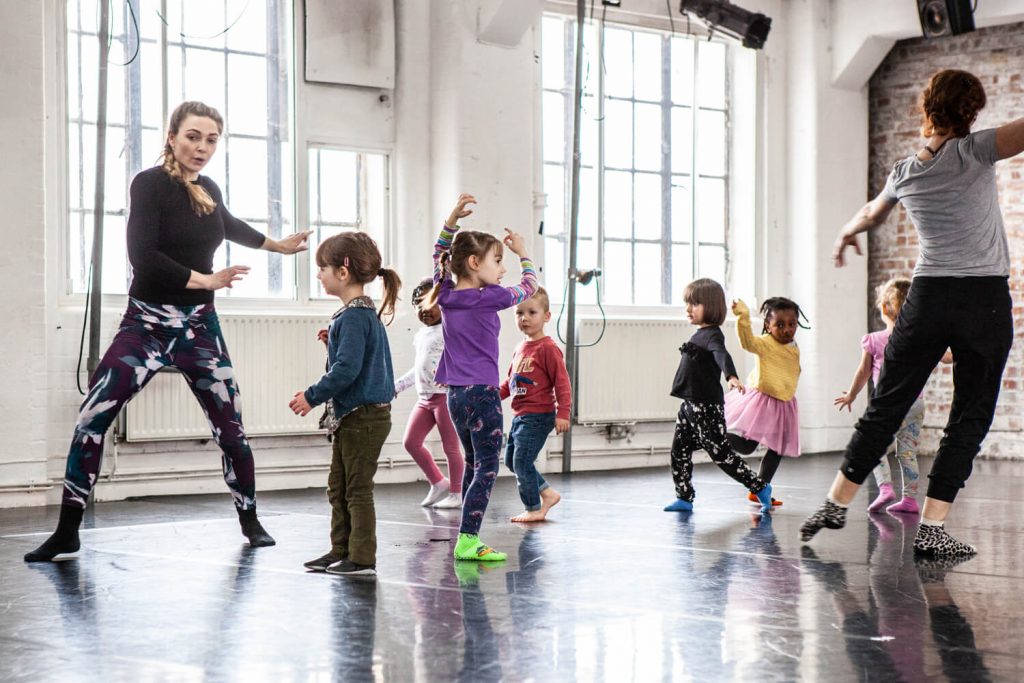
Facing the Chisenhale complex, the Dance Space is the lefternmost entrance – the purple door. Appropriately, most of the space is suspended in air. Chisenhale Dance Space is actually not part of the old Chisenhale Works building at all. It floats above the old Black Horse Brewery which used to neighbour the veneer works, and is now a derelict space used for film shoots.
As you might have gathered, dance is its main affair. The member-led organisation supports experimental dance, with development programmes for professionals and a variety of classes for children and adults just starting out.
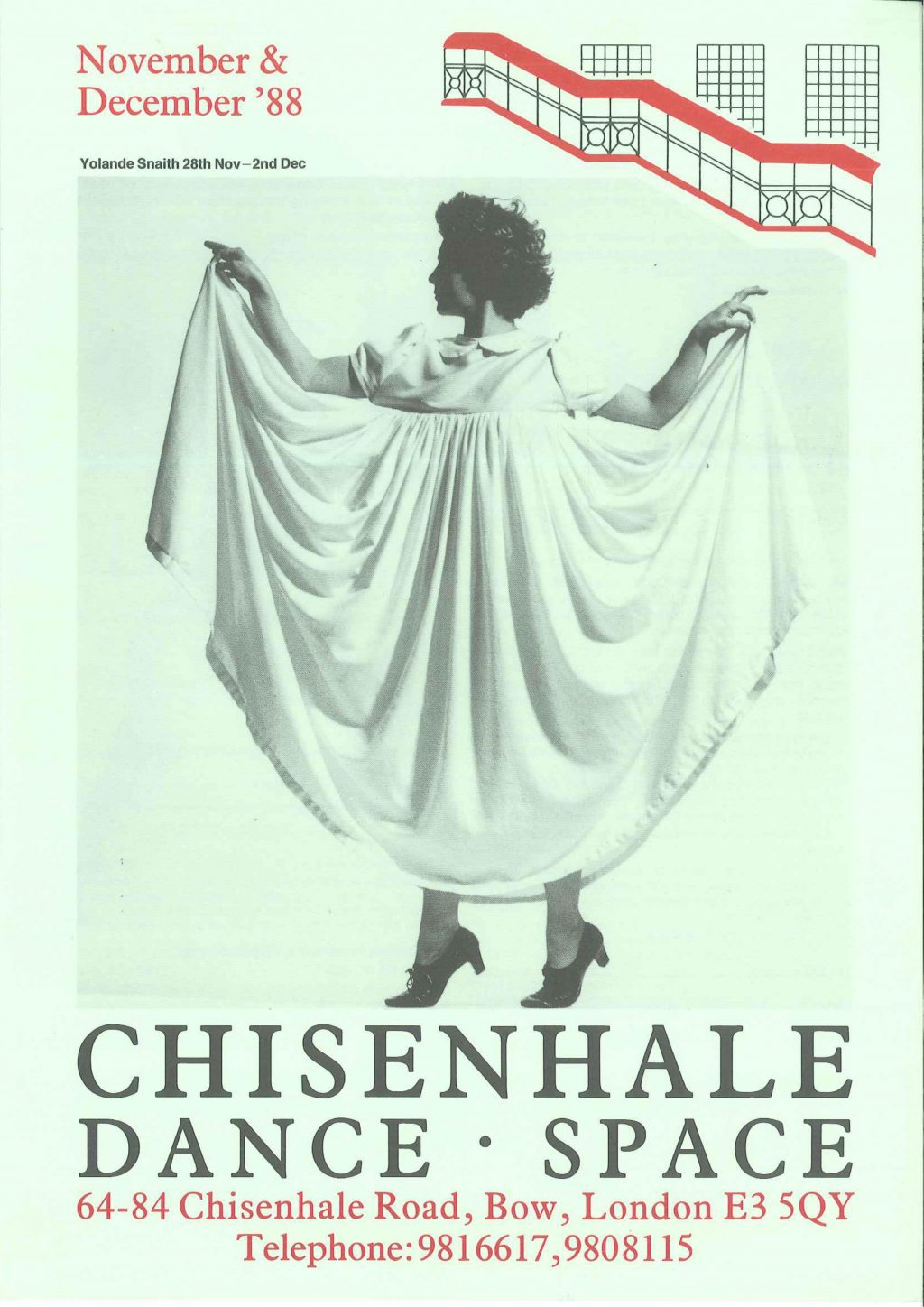
The Dance Space was developed by the X6 collective, a dance group that formed part of the original Butler’s Wharf crew which moved to Chisenhale in the early ‘80s. The space is homey space, with a kitchen and sofas and dance-themed zines stacked by the entrance.
There are two dance spaces, one of which takes up the lion’s share of the floor. The entire dance floor was transported over from Butler’s Wharf, board by board. The main performance space is expansive, with industrial windows on each side and a brick wall framing the space at the far end. It has become iconic in the world of experimental dance.
In the winter the dance floor needs a ‘winter coat’ covering to contain the chill from the derelict space beneath. In the winter the floor is black. In summer the floor and windows are uncovered and the space is bathed in sunlight.
As is tradition in East London, the Dance Space distances itself from the structure (and restriction) of tradition. True to its X6 origin, the space still feels like a kind of frontier land, where long-standing traditions can be toppled and new ones forged in their place.
The fire escape that dominates the exterior of the Dance Space was designed by Maxwell Hutchinson and was inspired by the Pompidou Centre in Paris.
Chisenhale Dance Space holds adult classes on Mondays and Wednesdays, and children classes on Saturdays. One-off workshops are also held frequently, and for the spectators among you, there are performances on practically every week.
Visit chisenhaledancespace.co.uk for more information
Discover Chisenhale
Several things become clear when you step beyond the the great industrial facade of the Chisenhale Art Place. First, it is not as daunting as it looks. The vibe in each is open, earnest, and creative.
Second, each head of the Chisenhale branch benefits from the freedom afforded it. Each runs with its own spirit, devoted to its own purpose and program of events. What they do share is a home and a creative spirit.
There is some confusion about the derelict space beside Chisenhale. This is as good an opportunity as any to address it. Contrary to what some locals may think, the derelict space beneath Chisenhale Dance Space doesn’t belong to Chisenhale – it belongs to Tower Hamlets Council. What the future holds for it is anyone’s guess.
Thankfully, Chisenhale Art Place’s immediate future is secure. It is in its second 25-year lease, which ends 2031, and is already working on a third. Chisenhale wants to stay, and it wants to share its work with you. Why not start this weekend?
If you enjoyed this piece you may like our article about the Nunnery Gallery

